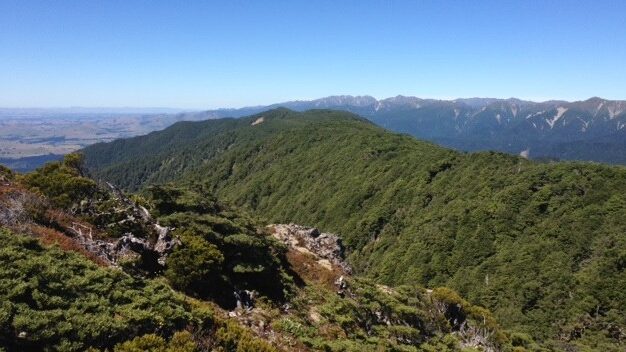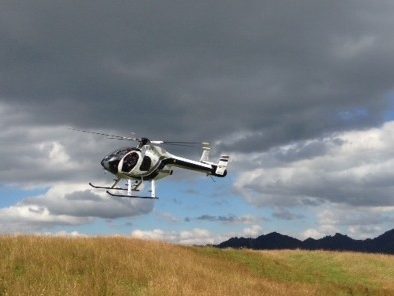By the eighth coffee and umpteenth chocolate chip biscuit I was feeling a little jumpy, and seriously doubting that we would ever leave base. Regular scanning of the horizon indicated that it was sunny and clear everywhere but where we wanted to go.

The destination was the open tops of the Ruahine Range – but they were elusively out of sight.
Hopping on the chopper
I had been attracted to this trip with the lure of a helicopter ride, and the opportunity to hang out with an inspiring group of people who are defending NZ’s ecological front line. Our task was to lay out one hundred DOC-200 traps (a large box trap primarily targeting stoats) in the Ruahine Range behind Waipukurau, central Hawkes Bay. For the uninitiated, one hundred traps is equivalent to 10 kilometres of trap line. We were a small party of nine, which suggested some heavy lugging was ahead of us.

The decision to drive to the helicopter loading site had the magical effect of driving away the clouds and by 5pm we could hear the welcome thock-thock-thock of the helicopter approaching from Hastings. Walking in the NZ hills has its challenges, but there is a certain sense of satisfaction one gets from lugging a pack up a steep track, arriving at the hut under one’s own steam, and settling in for a cup of tea. However, I happily traded that for a five minute, high-thrills ride in the helicopter. Landscapes disappeared and reappeared beneath my feet and a vista of mountains and sea stretched in front of me.
We settled into a cute little hut called Park’s Peak, lit ourselves a fire and feasted on lamb chops and fresh potatoes while the sun set over the Tasman. Regardless of the next day’s work requirements, the trip had already paid for itself many times over.
How to catch a stoat
There’s nothing technical about carrying DOC-200 box traps on your back. I was presented with two options. One: precariously balance four boxes on a pack frame while trying to protect your lower back from suddenly and catastrophically giving out. Two: carry two on your back and suspend another two from your fingertips using the fine chicken mesh at the trap entrance. It was a tough decision, but in time I settled on the latter and spent the day trying to make it look like my computer hands were up for the job.
A lot of sweating, puffing and good natured ribbing was done, and by 4pm that day 10 kms of new stoat control was in place – awesome. But that’s just the start of this story. These traps are only as good as the good people who come and re-bait them regularly. Each month a troupe of regular Kiwis will head into these hills to clear and reset them. And what that means is that a bunch more kiwi and blue duck mums and babies will survive this next breeding season. The northern Ruahine are home to a surviving population of Whio (blue duck), North Island brown kiwi and a number of other threatened plants and animals. But without predator control, that will not be the case in our grandchildren’s lifetime.
These local trappers are part of an emerging conservation story in NZ – one that has not been well broadcasted. They make up part of a patchwork of national predator control that is growing and connecting NZ’s network of forests and parks – urban and rural – to ensure they are alive with birdsong in the future. They are farmers, IT specialists, hunters, parents and kids. More often than not they don’t have a background in conservation, but they do have a passion to see our native taonga protected for the next generation.
Play a part
Have you thought about becoming part of this story? It’s not difficult and there are many worse ways to spend your time than a weekend in the hills or an afternoon in your local reserve. There are numerous ways to support these efforts and there are few places that aren’t looking to sign up the willing.
Try out Nature Space, your regional council, the DOC website or the local DOC office. If you’re fit and are comfortable in NZ’s backcountry, and are interested to know more about the community-driven Ruahine Blue Duck Project, then contact the local DOC office in Palmerston North ([email protected]). They will talk you through the requirements.

